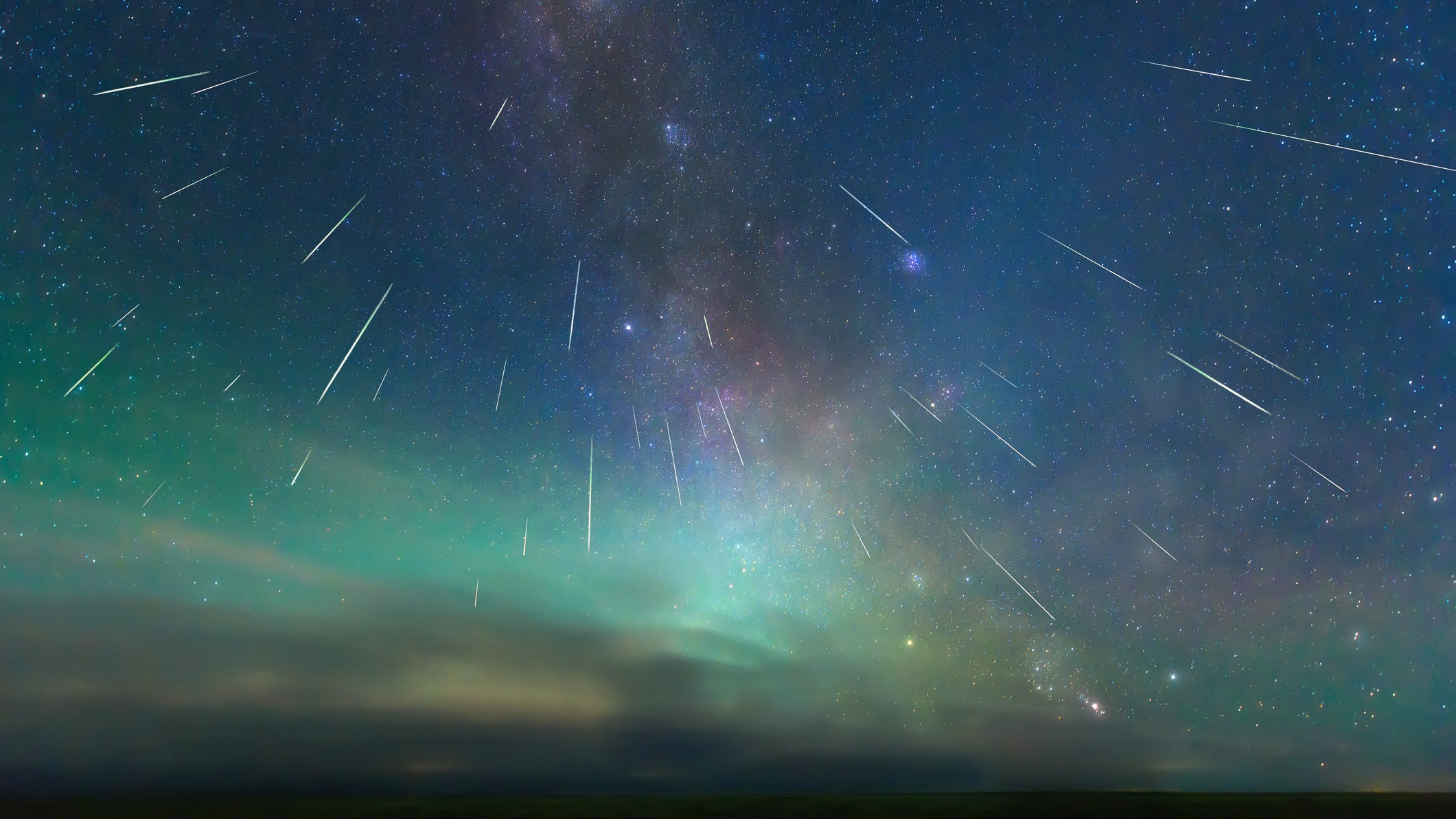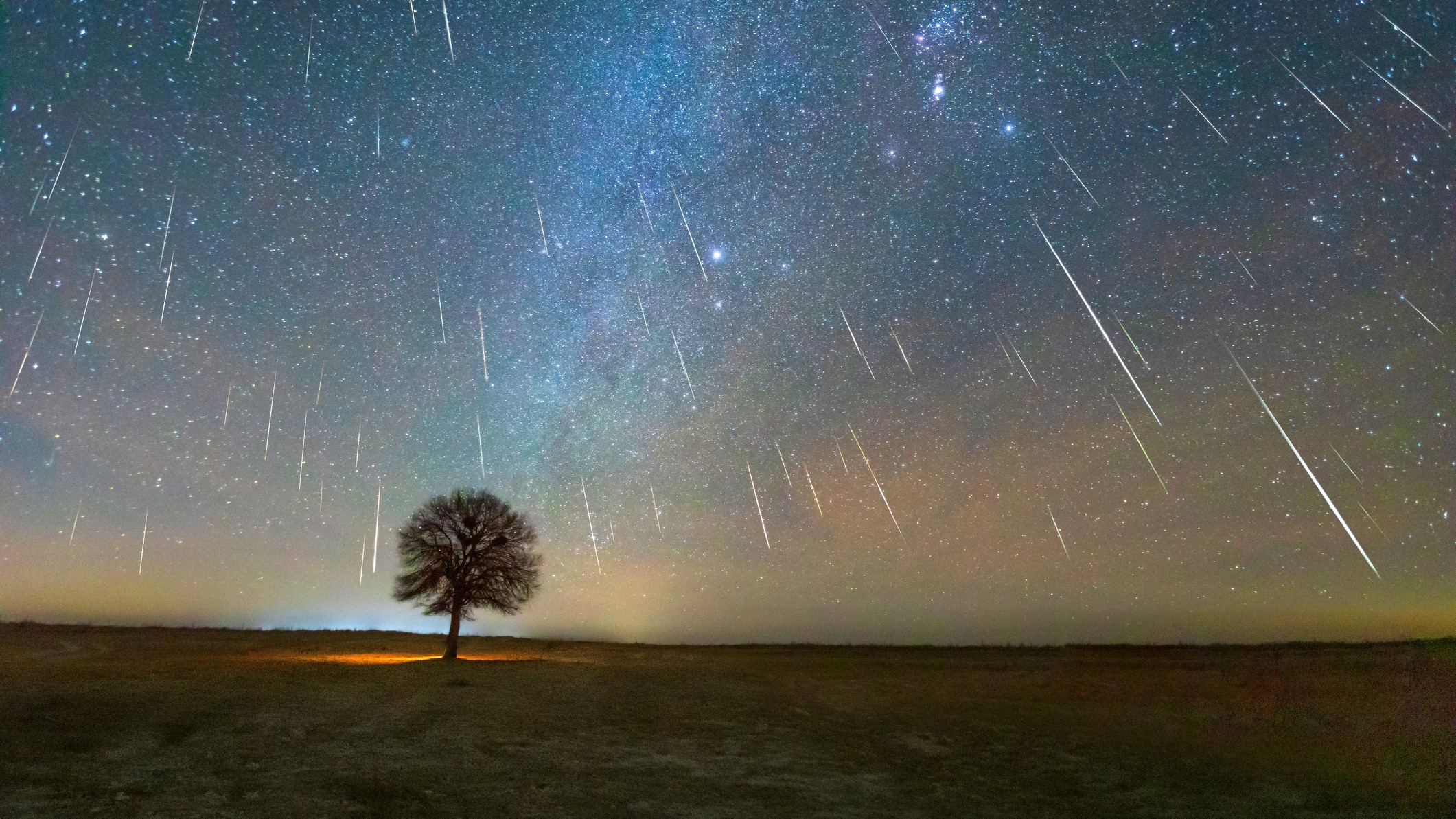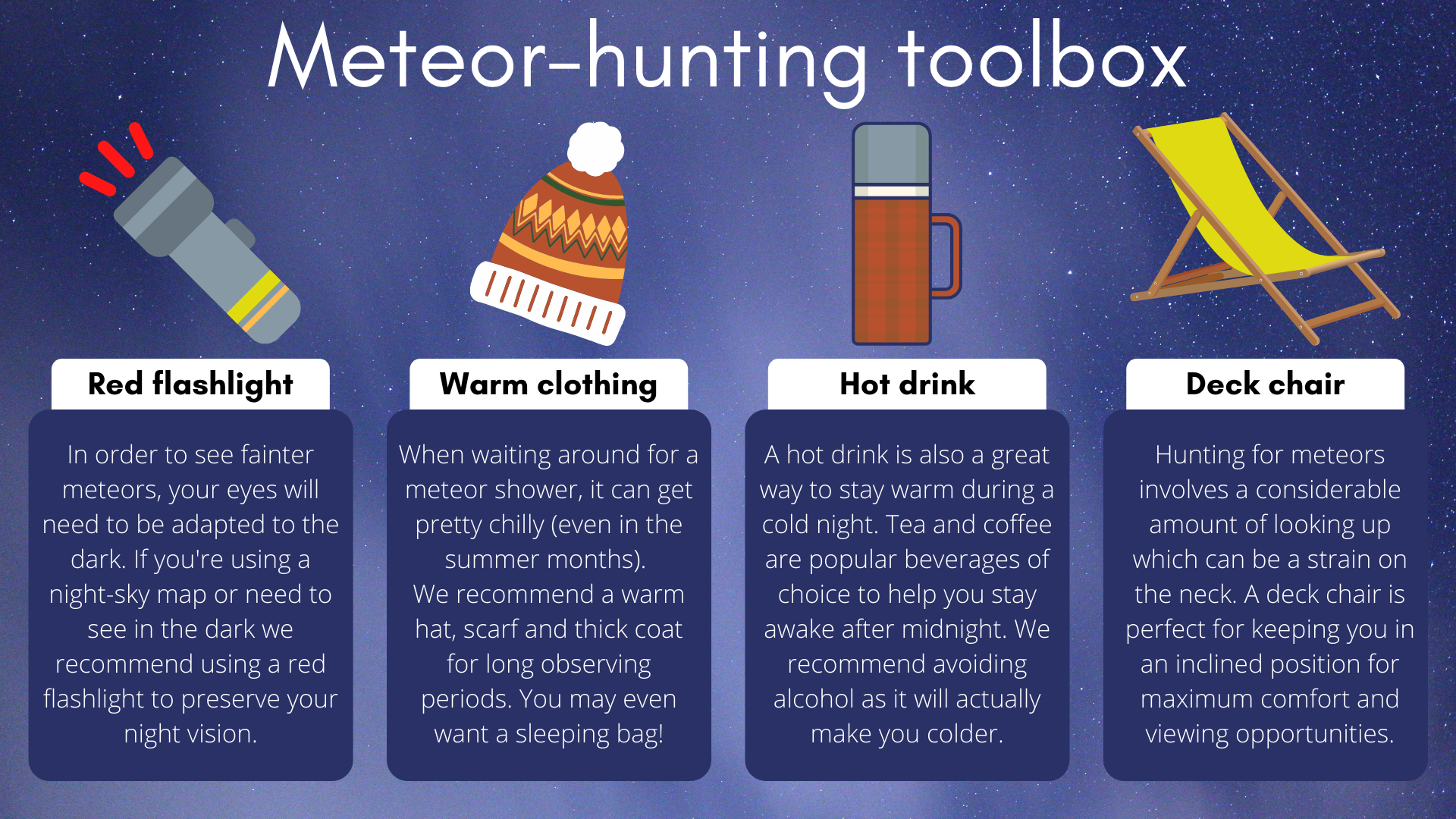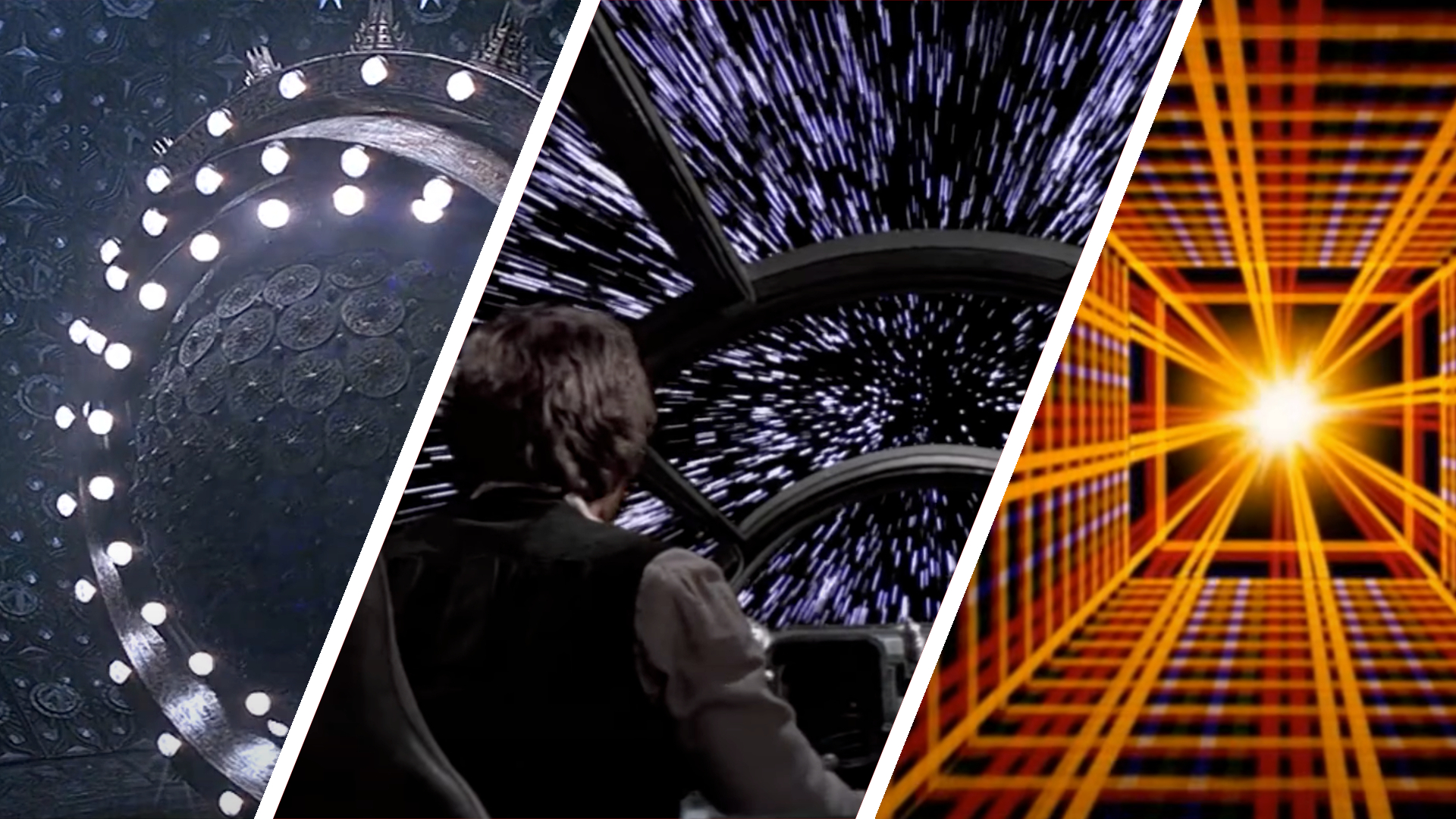Meteor showers 2025: When, where and how to see the best 'shooting stars' of the year
Find out when you can catch the best meteor showers this year with our 2025 meteor shower calendar.

When is the next meteor shower?
The next meteor shower to peak is the Lyrid meteor shower which is active from April 16 to April 25 each year and will peak overnight on April 22, 2025.
Meteor showers offer some of the most spectacular celestial displays of the year, and 2025 promises an exciting lineup. To catch these dazzling events, knowing the best time, location, and viewing conditions is key. Among the most prolific meteor showers this year are the Perseids, Geminids, and Orionids.
The Perseids, peaking on the night of Aug. 12 into the early hours of Aug. 13, are a fan favorite. Unfortunately, the peak occurs just three days after a full moon, so moonlight may wash out fainter meteors. Still, the shower is so prolific it's worth trying to catch a glimpse of them before dawn. The Geminids peak overnight on Dec. 13-14. Though the moon will be around 37% illuminated, it won't rise until after 2:30 a.m., meaning some of the best viewing conditions will occur around midnight. Meanwhile, the Orionids, peaking overnight from October 20-21, will benefit from a new moon coinciding with the peak — providing ideal dark skies. The best viewing time is around 2 a.m.
Here's how, where, and when to experience these 'shooting star' shows and make the most of 2025's meteor shower season.
Meteor showers 2025

January: Quadrantids

The Quadrantid meteor shower is one of the strongest and most consistent showers of the year. It is active (and visible) between Dec. 28 and Jan. 12.
The Quadrantids will next peak around Jan. 3, 2025.
The moon will not interfere with the 2025 Quadrantids as it will be a waxing crescent and set late on January 2.
The shower's radiant is in the constellation Bootes. The easiest way to find it is to look north for the Big Dipper. Then, follow the "arc" of the Big Dipper's handle across the sky to the red giant star Arcturus, which anchors the bottom of Bootes.
April: Lyrids

The Lyrid meteor shower is a medium-strength shower that occurs between April 16-25 every year.
The Lyrids will next peak on the night of April 22, 2025, displaying a maximum of about 18 meteors per hour in a clear sky. Late evening April 21 until dawn April 22 will be the best time to view the Lyrids.
The radiant will be between the constellations Lyra and Hercules. The bright star Vega is part of Lyra, so you can also look for it to get a good idea of where the radiant for the Lyrids will be.
According to the American Meteor Society, viewers should have a good view of the meteor shower for the three days around the shower's peak.
The source of material that creates the Lyrid meteor shower is Comet Thatcher. The Lyrids have been viewed by different cultures for the past 2,700 years, according to NASA.
May: Eta Aquariids

The Eta Aquariid meteor shower is active between Apr. 15 and May 27
The Eta Aquariids will next peak around May 4-5, 2025, the best time to watch will be in the hours before dawn on May 5.
These chunks of space debris come from a celestial icon: Halley's Comet. The Eta Aquariid meteor shower is categorized as a strong shower and is best viewed from the Southern Hemisphere or close to the equator. Folks in some northern latitudes, however, can also observe them.
Related: Eta Aquariid meteors dazzle in spectacular 'shooting star' photos
People closer to the equator will have the best chance to see the Eta Aquariids. The meteors radiate from the constellation Aquarius, which dwells in the southern sky. This means that the radiant of these shooting stars will be lower on the horizon for those viewing from the Northern Hemisphere, and it will appear higher in the sky for observers in the Southern Hemisphere.
"The Etas are not a shower that you can go out to see after sunset because the radiant won't be up," said Cooke. To see the Eta Aquariids, Cooke recommends getting up to be outside at 2:00 a.m. local time. From then on, the rates will continue to increase until dawn.
These meteors are short, swift streaks, produce long trains, according to AMS, and travel at about 41 miles (66 km) per second.
August: Perseids

The Perseid meteor shower is one of the most prolific showers of the year, producing rich, bright streaks. The Perseids are active from mid-July until late August and will peak on the night of Aug. 12, before dawn on Aug. 13, 2025, according to Royal Museums Greenwich.
Viewers should start observing around 11 p.m. local time when the rates of shooting stars increase and can watch the sky until dawn. Unfortunately, the peak occurs just three days after a full moon, so moonlight may wash out fainter meteors.
The Perseid meteor shower radiant is in the constellation Perseus. This strong shower is produced by Comet 109P/Swift-Tuttle, an icy body that takes 133 Earth years to orbit once around the sun.
If there's a clear sky, the Perseids will have a meteor rate of about 100 visible 'shooting stars' per hour.
October: Draconids
The Draconid meteor shower has staged some dramatic outbursts in the past but nowadays its show is far from extravagant. In recent years the Draconids have been relatively quiet, producing few meteors and no noticeable outbursts of activity.
The shower is active between Oct. 6-10, peaking around Oct. 8, 2025.
The Draconids are caused by Earth passing through debris — bits of ice and rock — left behind by Comet 21P/Giacobini-Zinner as it hurtles through the solar system, passing Earth once every 6.6 years, according to NASA Science.
October: Orionids

Like the Eta Aquariids, the Orionid meteor shower is a by-product of Halley's Comet. The Orionids are active from Sept. 26 to Nov. 22 and will peak overnight Oct. 20-21, 2025, with clear-sky rates of about 20 meteors per hour.
The best time to view the Orionids is around 2 a.m. when the radiant is highest in the sky. The peak also occurs at the same time as the new moon, providing ideal dark skies for meteor hunting.
Orionids are named for their radiant near the constellation Orion, the hunter, which is one of the easier constellations to spot with the three stars that make up its 'belt.'
November: Taurids

The Taurid meteor shower is an annual meteor shower that occurs every November and is composed of two streams, the Southern Taurids and the Northern Taurids. The Taurids put on a rather modest show, especially when compared with August's Perseid meteor shower or December's Geminid meteors.
At peak viewing times during the Taurid meteor shower, you may be able to see about a half-dozen shooting stars per hour, at best.
This year, the Southern Taurids will be active between Sept. 10 and Nov. 20, peaking around Oct. 10. Whereas the Northern Taurids will be active between Oct. 20 and Dec. 10, peaking around Nov. 12, according to the Royal Museums Greenwich. The Taurids are generally more noticeable around late October to early November when they overlap.
The best time to view the Taurids will be around midnight on Nov. 5, 2025, when the waxing gibbous moon has either set or is lower in the sky, according to EarthSky.
November: Leonids

The Leonid meteor shower offers clear-sky meteor rates of about 10 to 15 shooting stars per hour. The Leonids are active between Nov. 3 and Dec. 2 and will next peak around Nov. 17, 2025. The best time to look for the Leonids will be late on the night of Nov. 16 until dawn on Nov. 17.
The Leonids are bright meteors and have a high percentage of persistent trains according to AMS.
Related: The most amazing Leonid meteor shower photos
The Leonids' radiant is located in the sickle-shaped head of the constellation Leo, the lion.
Leonid meteor hunting can be incredible, or a total bust. It all depends on where its parent body, Comet 55P/Tempel-Tuttle, will be in its orbit and the kind of debris clumps that will be around when our planet passes through this comet's orbit.
The Leonids put on big shows in 1966, 1999 and 2001, according to AMS, when the comet was making its closest approach to the sun. It will be several years until observers get a big show from the Leonids.
"The best we can hope for now until the year 2030 is peaks of around 15 shower [meteors] per hour and perhaps an occasional weak outburst when the earth passes near a debris trail. The Leonids are often bright meteors with a high percentage of persistent trains," according to AMS.
December: Geminids
The Geminid meteor shower occurs between Nov. 19 to Dec. 24 and will next peak overnight on Dec. 13-14, 2025. The shower can produce up to 120 meteors per hour under perfect dark sky conditions.
The Geminids are one of the most prolific meteor showers of the year, second to only the Perseid meteor shower in August.
Though the moon will be around 37% illuminated during the peak, it won't rise until after 2:30 a.m., meaning some of the best viewing conditions will occur around midnight.

Unlike the other showers on this list, the Geminids are the by-product of an asteroid not a comet. The debris that falls onto Earth's atmosphere during this meteor shower comes from the asteroid Phaethon.
The meteor shower's radiant is located in the constellation Gemini, which rises around sunset. The shower is best viewed from the Northern Hemisphere but can be viewed from the Southern Hemisphere, although at a reduced meteor rate.
Geminid meteors are bright and "intensely colored," according to AMS, although they aren't likely to produce long trails. These meteors are also visible in the southern hemisphere but at reduced rates.
December: Ursids
The Ursid meteor shower is active between Dec. 13-24 and will next peak overnight on Dec. 22-23, 2025. They're generally a fairly sparse display, producing approximately five meteors per hour, according to Royal Museums Greenwich.
The Ursids are associated with Comet 8P/Tuttle, a periodic comet that follows a 13.5-year elliptical orbit around the sun.
How to see a meteor shower

If you're looking for a good camera for meteor showers and astrophotography, our top pick is the Nikon D850.
Meteor showers are an investment of time and preparation is key to seeing them, according to Cooke, but it's worthwhile because it's cheap — no telescope or binoculars are necessary — and the simplest form of astronomy there is.
Meteor shower observing can't be done on a whim, but it's pretty straightforward: Get away from bright lights, take time to adjust your eyes to the night sky and avoid looking at your cellphone if you get bored. The bright screen can throw a wrench in your efforts to adjust your night vision. "My suggestion to my friends who want to observe meteors is, leave your phone inside," said Cooke.
Give your eyes 30-45 minutes to adapt to the dark, he said, and take in as much of the sky as possible by lying down flat on your back. Meteors can appear anywhere in the sky, and the more sky you see, the better your chance is to spot one.
Each shower has a radiant, or a point in the sky where the meteors appear to originate. Knowing where the radiant is can be helpful, though the longer streaks will be visible farther away from the radiant. "You do not want to look at the radiant," Cooke said. "A good philosophy is to lie on your back and look straight up. And that way, you take in as much of the sky as you can."
If you want more advice on how to photograph the Taurids, check out our how to photograph meteors and meteor showers guide and if you need imaging gear, consider our best cameras for astrophotography and best lenses for astrophotography.

Keep in mind that some sky conditions can impede the successful viewing of shooting stars. Cloud coverage could block the sky, and the moon could also tarnish meteor shower viewing even on a clear night. Depending on the moon phase the amount of moonlight will wash out the faint meteors.
To calculate sunrise and moonrise times in your location check out this custom sunrise-sunset calculator. Sometimes meteor showers produce exceptionally bright streaks. Observers can occasionally spot fireballs, or meteors brighter than Venus, the brightest planet in the night sky. The rate of shooting stars can be higher than usual in some instances, too, when the stream of space rocks gets a gravitational "nudge" from the planet Jupiter.
Related: Brilliant yellow-green fireball lights up sky above England (video, photos)
What causes meteor showers?
Meteor showers happen when Earth passes through the debris field of a comet or asteroid as these objects make their way around the sun, shedding "crumbs" along the way. That's why a given meteor shower generally appears around the same time each calendar year. And occasionally, when Jupiter gets close to a stream of debris, its immense gravity perturbs the particles, nudging them slightly closer to Earth and thereby increasing the number of meteors visible in the night sky. Occasionally, this can produce outbursts or brief periods of intense activity in which skywatchers can see more than 1,000 meteors per hour.
Most annual meteor showers don't outburst, though, and are typically classified as strong, medium or weak showers, depending on their peak rates.
Additional resources
Explore meteor showers in more detail and discover the difference between sporadic meteors and meteor showers with Geology.com. Learn more about meteor showers with these FAQs from NASA. Find out how we predict the intensity of meteor showers with BBC Science Focus.
Follow us on Twitter @Spacedotcom or Facebook
Join our Space Forums to keep talking space on the latest missions, night sky and more! And if you have a news tip, correction or comment, let us know at: community@space.com.
Get the Space.com Newsletter
Breaking space news, the latest updates on rocket launches, skywatching events and more!

Daisy Dobrijevic joined Space.com in February 2022 having previously worked for our sister publication All About Space magazine as a staff writer. Before joining us, Daisy completed an editorial internship with the BBC Sky at Night Magazine and worked at the National Space Centre in Leicester, U.K., where she enjoyed communicating space science to the public. In 2021, Daisy completed a PhD in plant physiology and also holds a Master's in Environmental Science, she is currently based in Nottingham, U.K. Daisy is passionate about all things space, with a penchant for solar activity and space weather. She has a strong interest in astrotourism and loves nothing more than a good northern lights chase!










